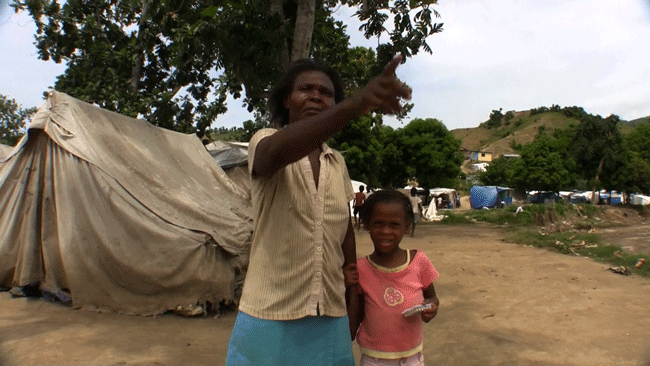January 12 victims - Abandoned like a stray dog
 Monday, August 22, 2011 at 07:09PM
Monday, August 22, 2011 at 07:09PM Eighty thousand tiny houses dot the cities and countryside in the capital and other parts of Haiti devastated by the January 12, 2010, earthquake that killed up to 230,000, damaged or destroyed 171,584 homes and displaced over a million people.
The Bill Clinton-led Interim Haiti Recovery Commission (IHRC) has approved $254.5 million worth of housing repair and reconstruction projects that will reportedly fix, upgrade or build about 41,759 housing units.
The new government – led by singer Joseph Michel Martelly – recently organized “Reconstruction Week.” Among other activities, Clinton and the president inaugurated a “housing exposition” with over 60 model homes and a new mortgage program called “Kay Pa M” (“My House”).

Strategy announced by the international agencies and government last
November. Has it been followed? Source: Shelter Cluster
Does that mean the reconstruction is off to a good start? Will the 634,000 people still living in Haiti’s 1,001 camps, and the undoubtedly tens of thousands of others living in unsafe and even condemned structures, soon move to safe housing?
Far from it, Haiti Grassroots Watch discovered.
The team of community radio journalists, students and journalists made surprising – and shocking – discoveries in the course of a two-month investigation involving camp-dwellers, humanitarian organizations and authorities in the capital and in the “Palms Region” – the smaller cities of Léogâne, Petit-Goâve and Grand Goâve located near the epicenter of the earthquake, where over 150,000 were made homeless and where today about 24,000 people – about 7,500 families – still live in squalid camps.
Among the findings, 17 months after the earth shook –
• Even if all of the planned repairs and construction of 68,025 units takes place, that will account for only about 22 percent of the 304,060 victim families counted up in the camps last fall. (Today there are less people in the camps due to various factors, including the expulsions of over 50,000 people, and the return of thousands of families to unsafe lodgings.)
• Most of the plans and projects announced so far exclude the hundreds of thousands of people who were renters prior to the earthquake.
• At least 5,400 of the planned new or repaired units are actually slated for Haiti’s North Department – far from the earthquake epicenter and its victims, but right next to the where foreign companies are planning a new industrial park with low-wage assembly factories.
• Landowners and homeowners are the main group receiving the 116,000 “T-Shelters” (“transitional” or “temporary” shelters) which cost humanitarian agencies and their donors over US$200 million. But over half of the 304,020 displaced families counted last fall – over 173,000 of them – didn’t own a home or land.
• Most of the camps in the Palms region, and nationwide, lack adequate water and sanitation facilities. People often bathe, and sometimes even defecate, in the open, use unchlorinated water, lack hand-washing facilities and live in squalid, infrahuman conditions in a country where every day hundreds are infected with the deadly Vibrio cholera.
• No single agency – national or international – is the point institution on reconstruction of housing, although it appears that progress is finally being made in that sense.

Petit Goâve camp resident Louise Delva points to riverbed which she
and others use as an open latrine.
On the other hand –
• Many of the over 116,000 T-Shelters can be called “semi-permanent” or even better, because they are built on solid foundations, of sturdy material, their walls can be reinforced, and they can be added to by the beneficiary family.
• The multimillion dollar reconstruction projects in the capital promise to rehabilitate neighborhoods which at least 80,000 households call “home.”
Louise Delva, who didn’t get a T-Shelter, and who isn’t part of the reconstruction projects, lives in a rotting tent in the “Regal” camp with her children on the banks of a riverbed that refugees use as a toilet. Twenty-one camp residents were stricken with cholera in one week earlier this summer. She’s practically given up hope.
“They say we have leaders? We don’t have leaders in this country. They’ve abandoned us, like a stray dog.”
Read
Watch the video, with visits to three camps


Reader Comments